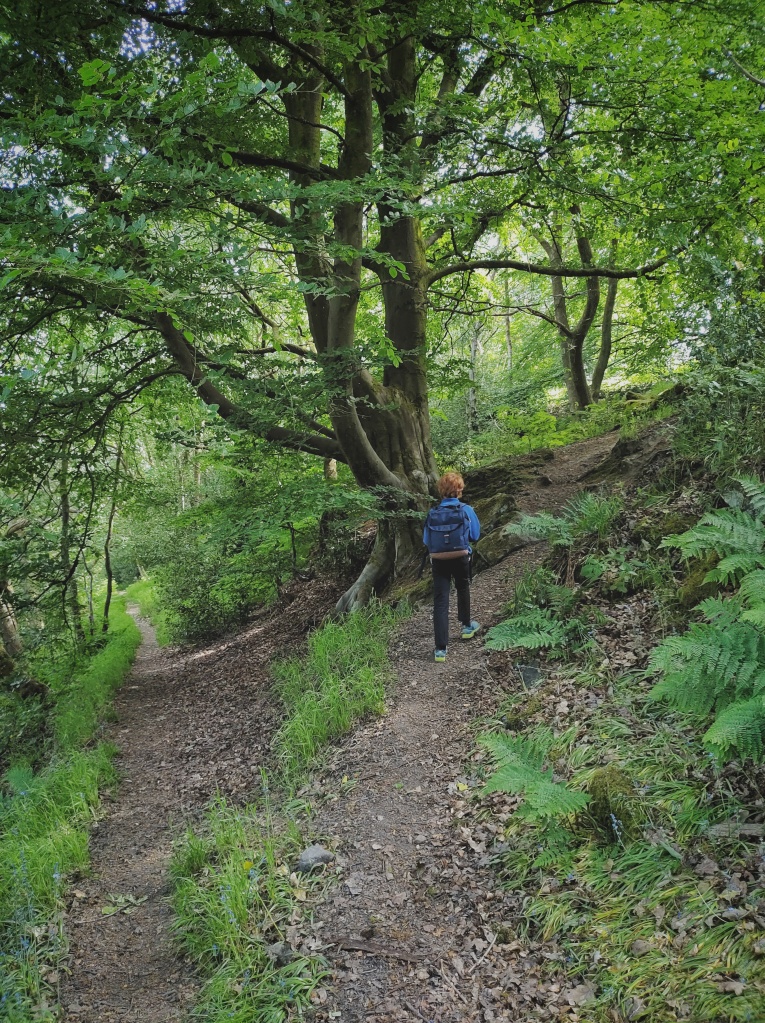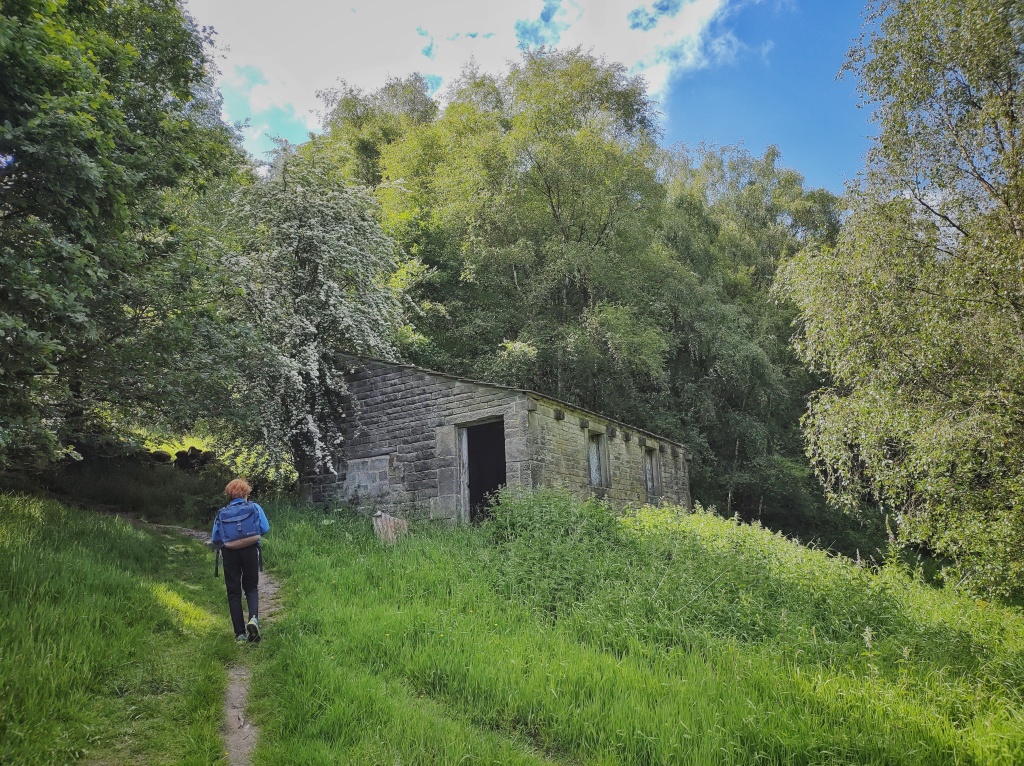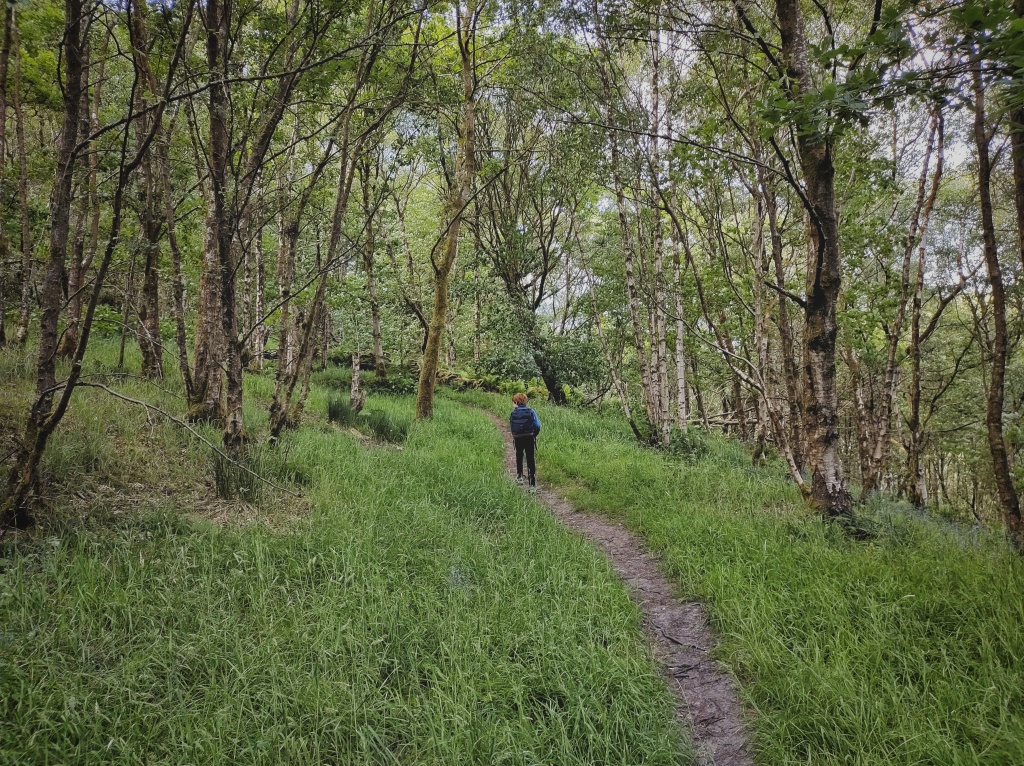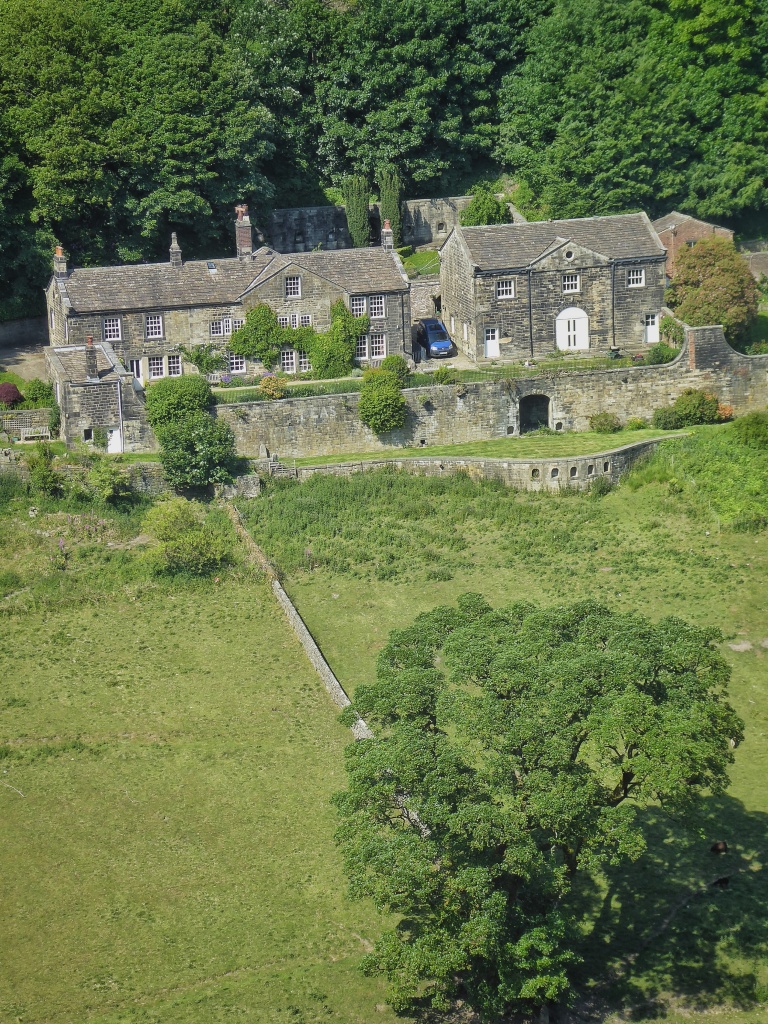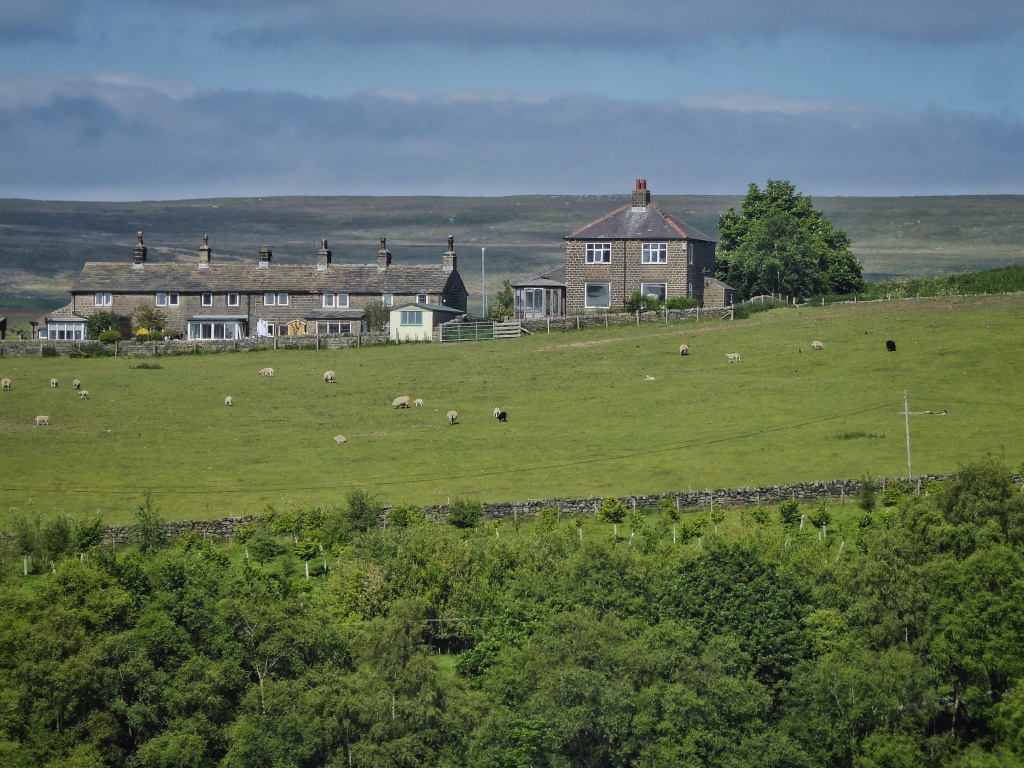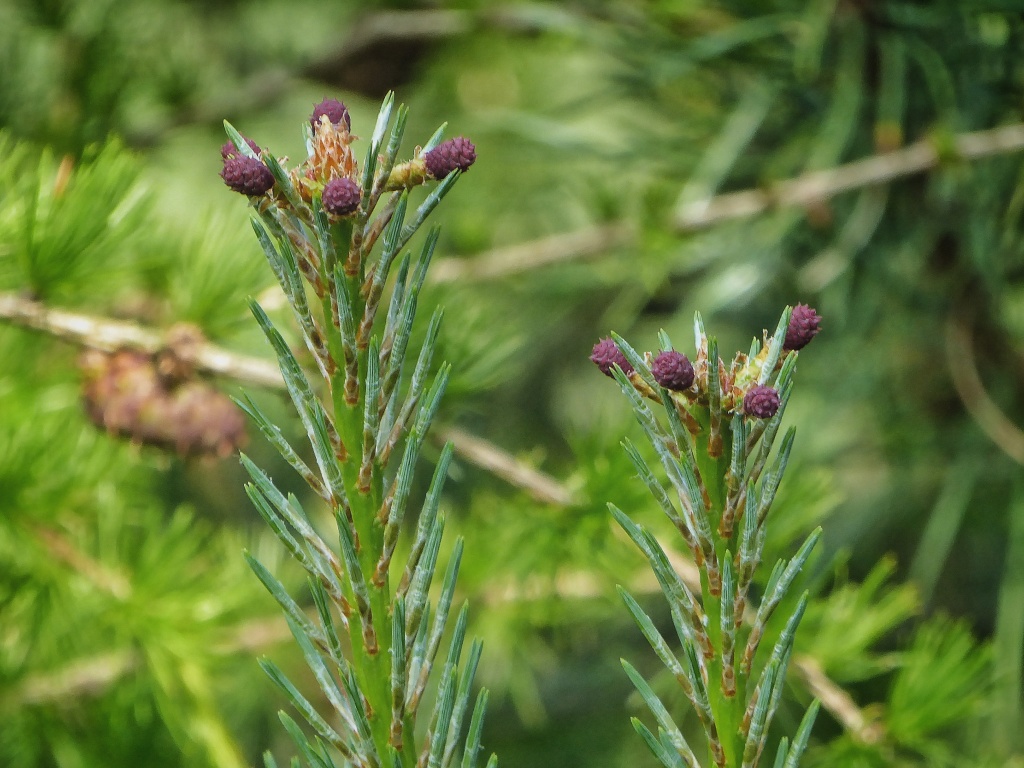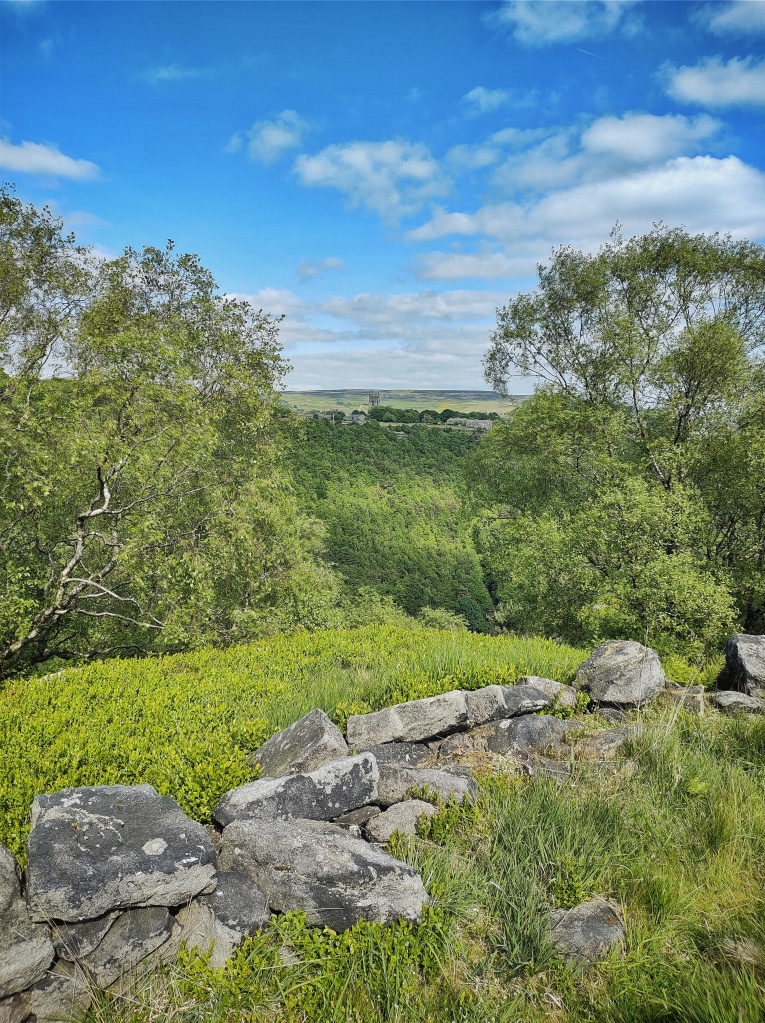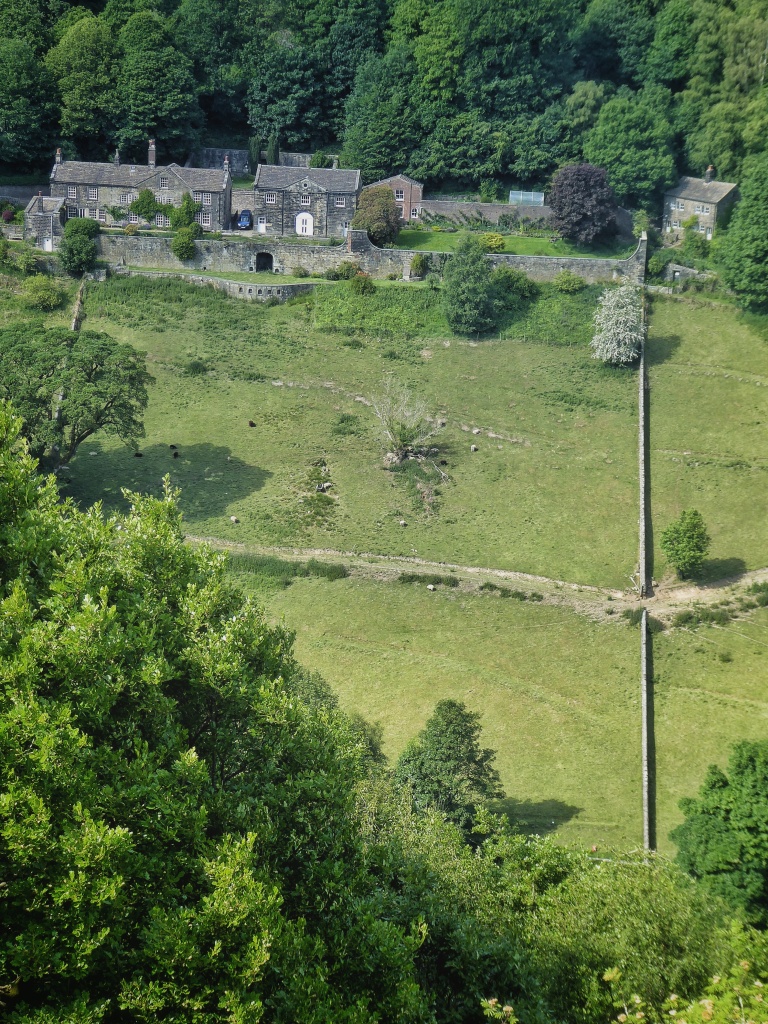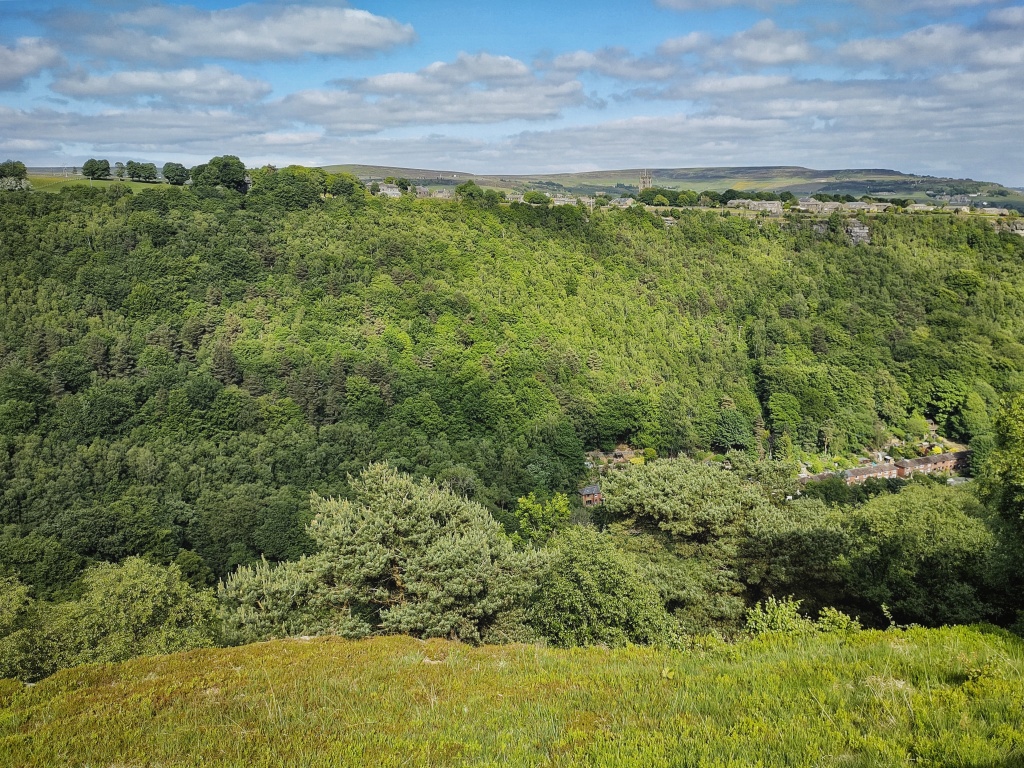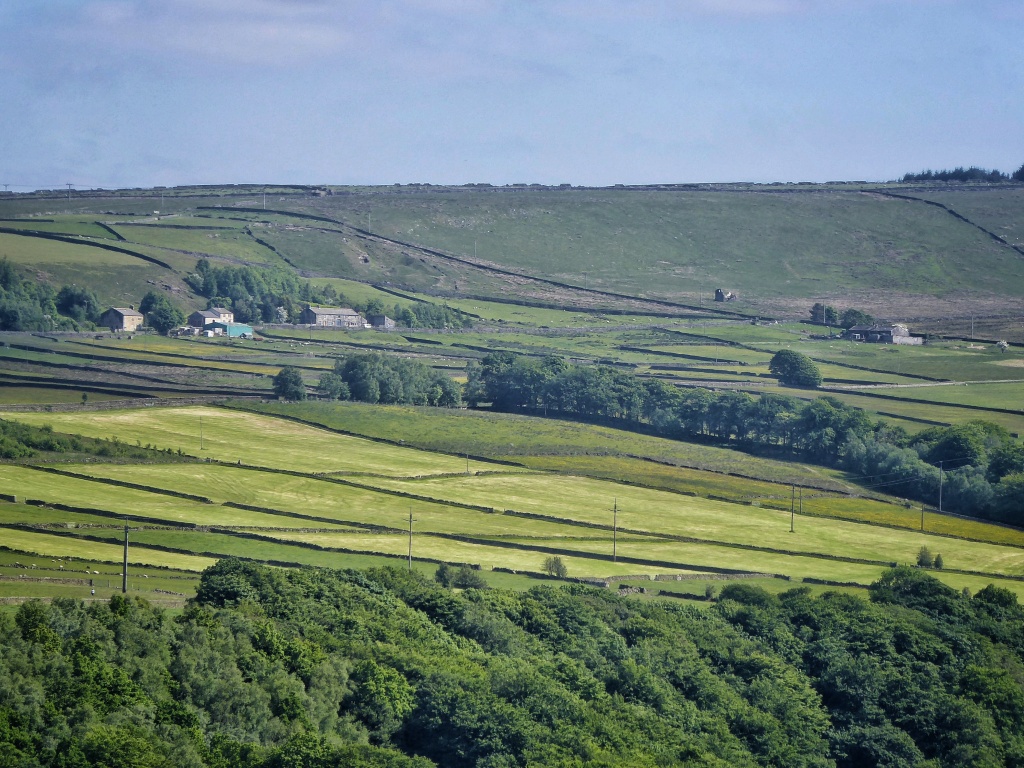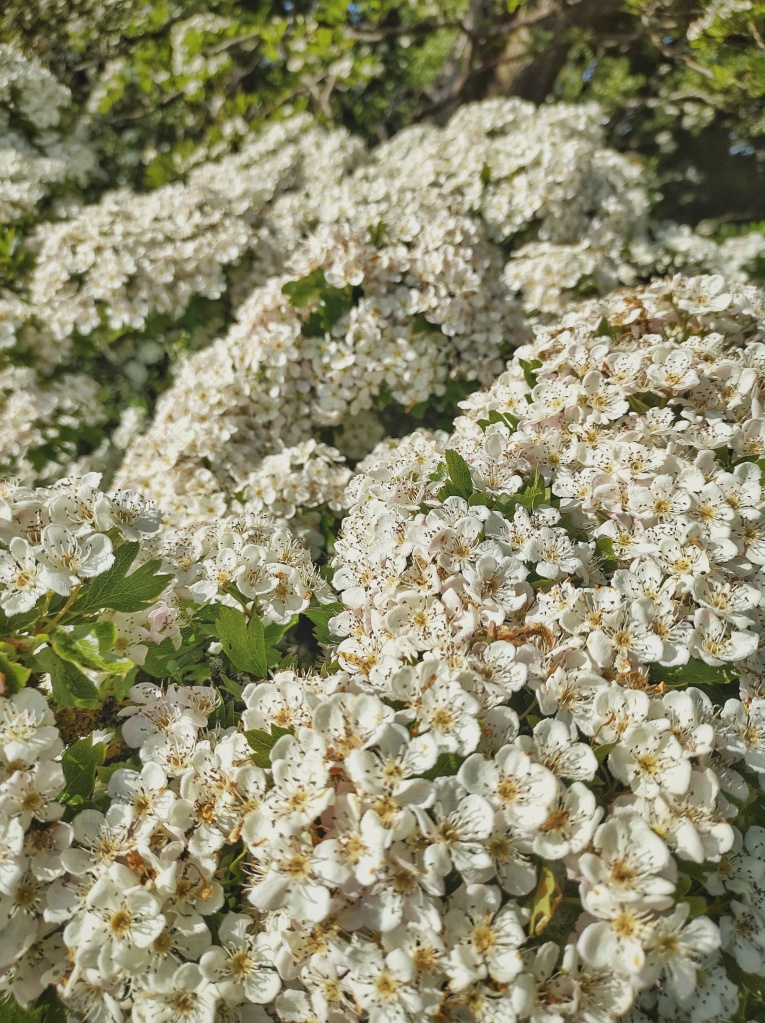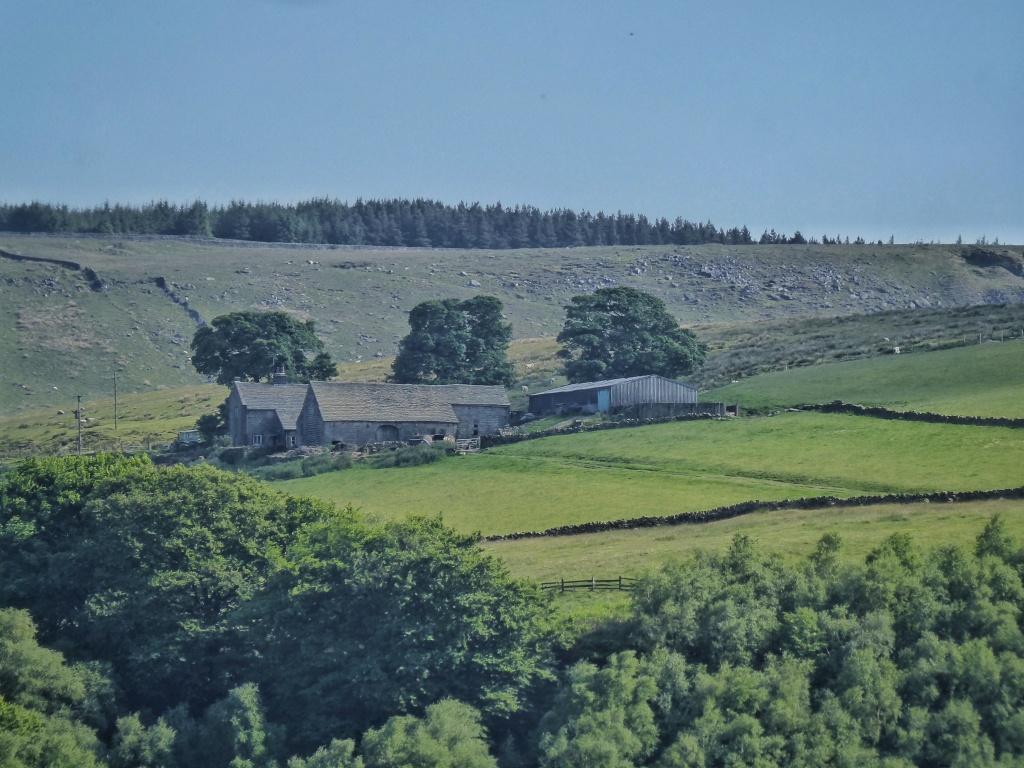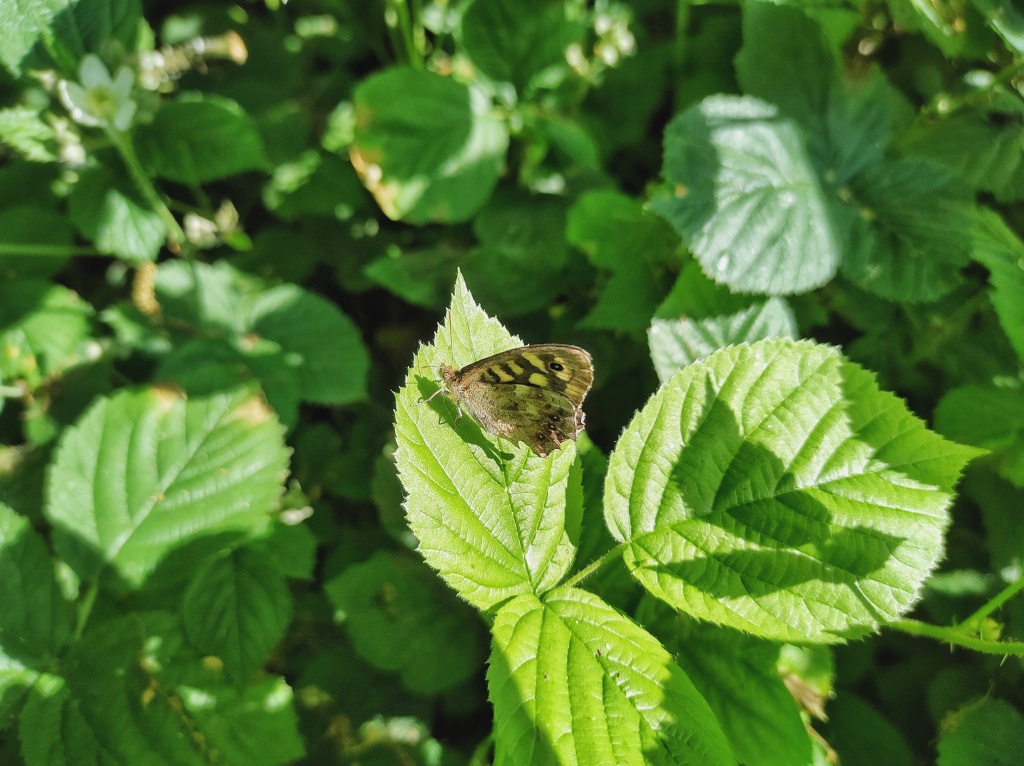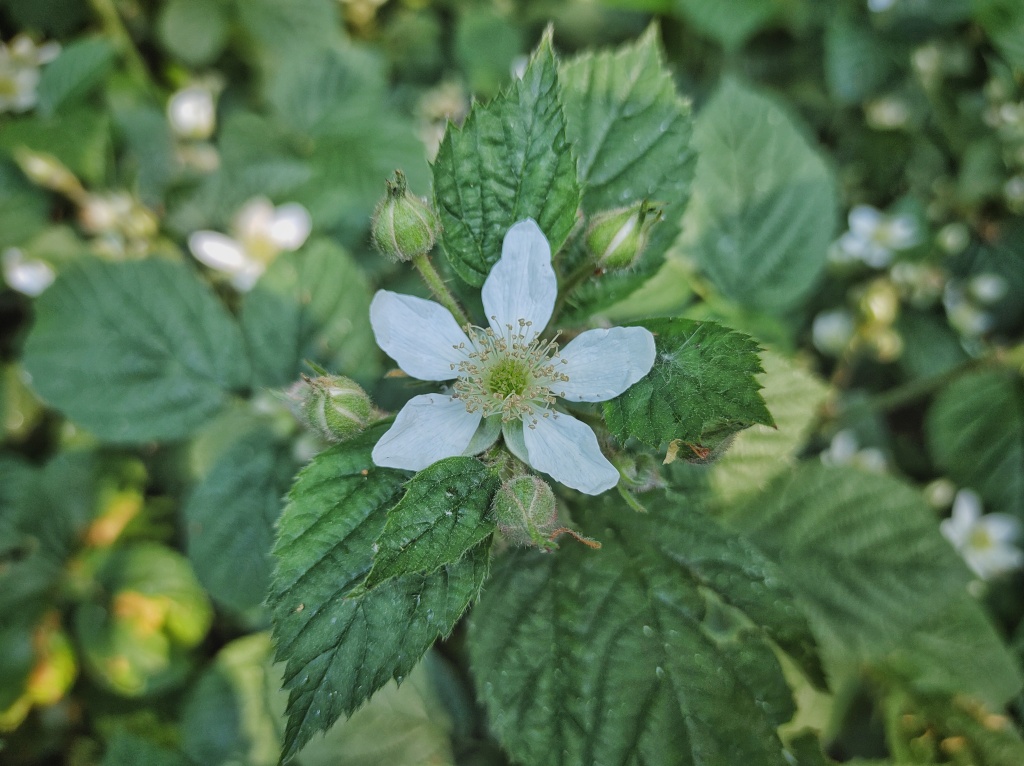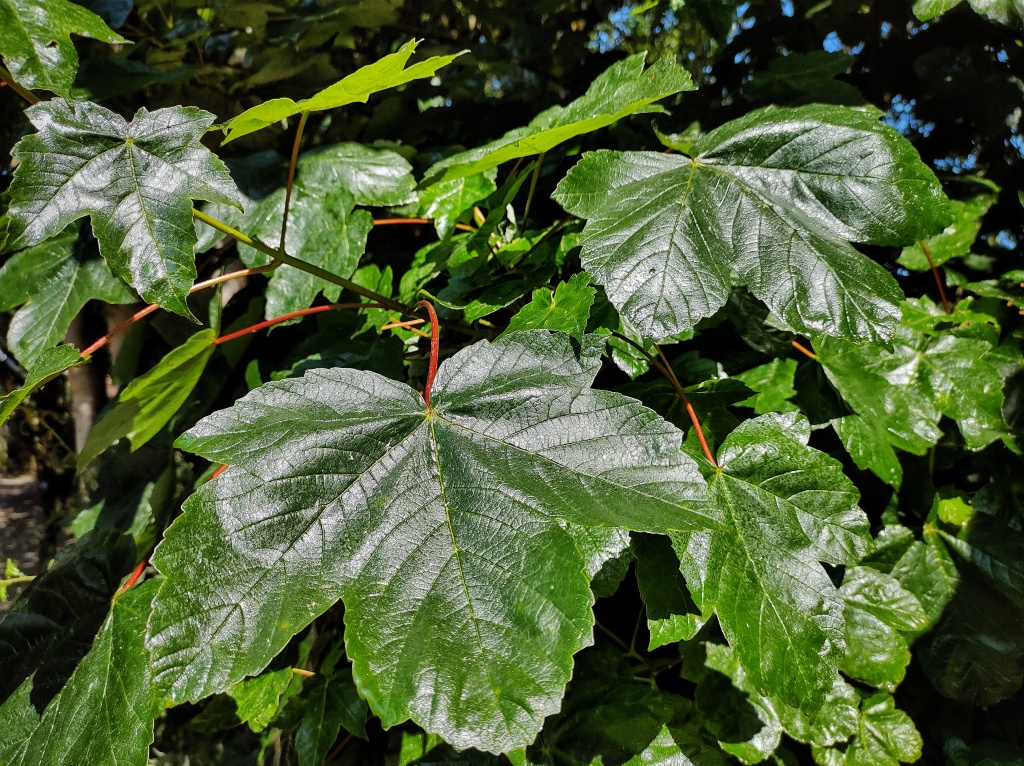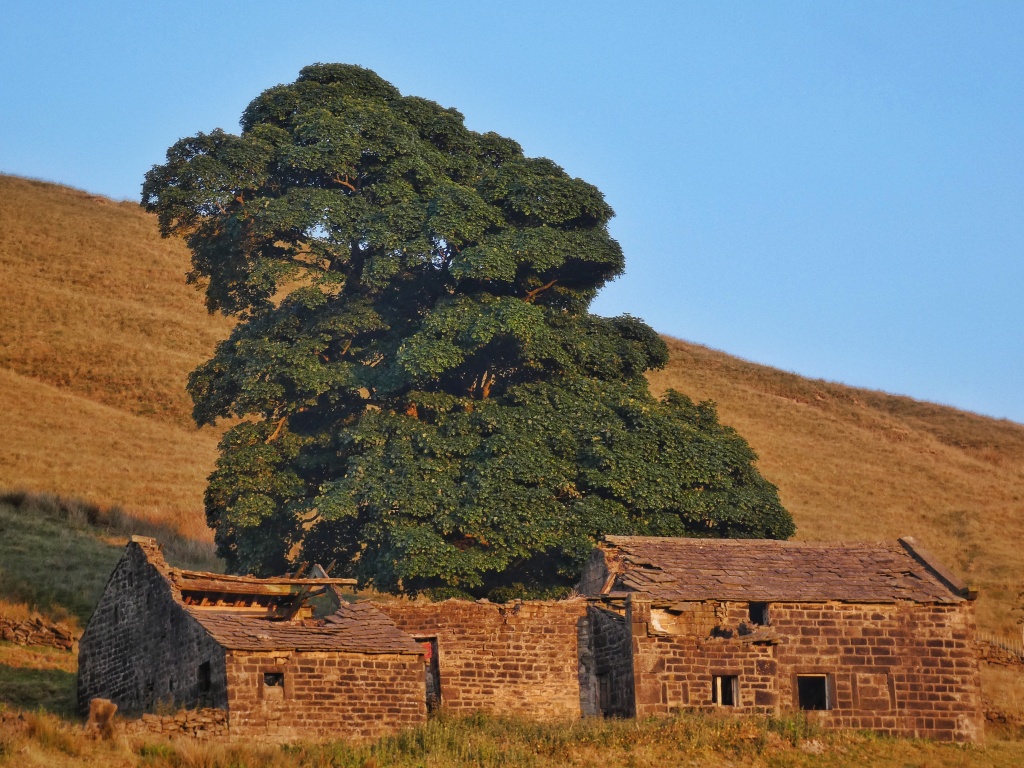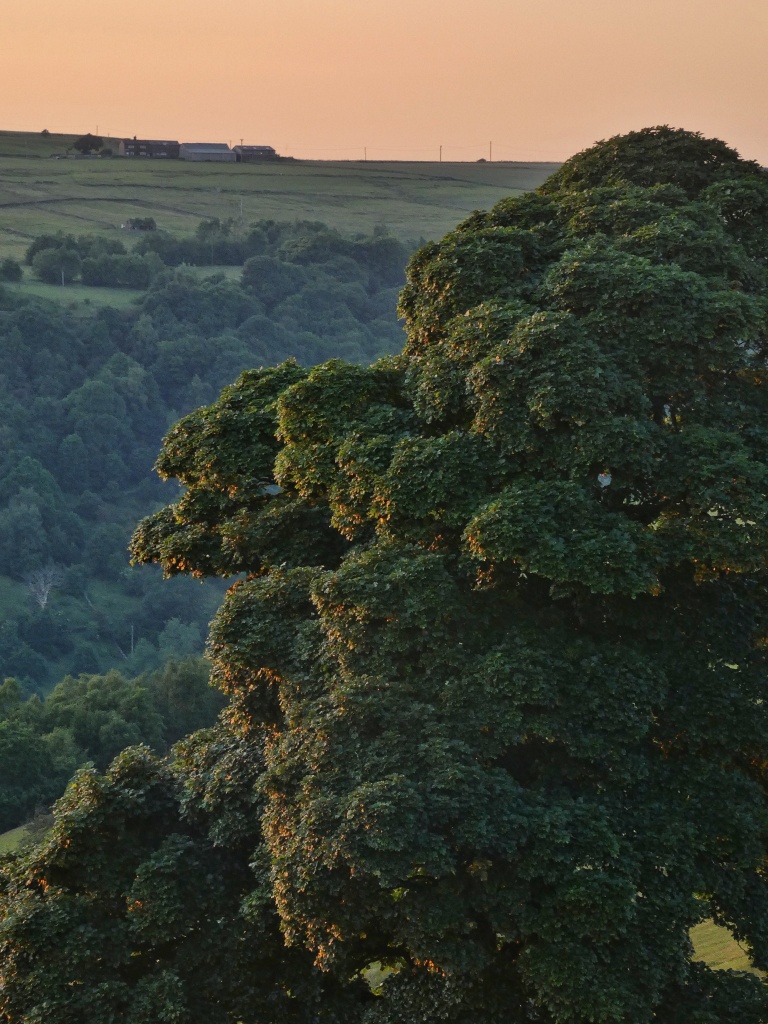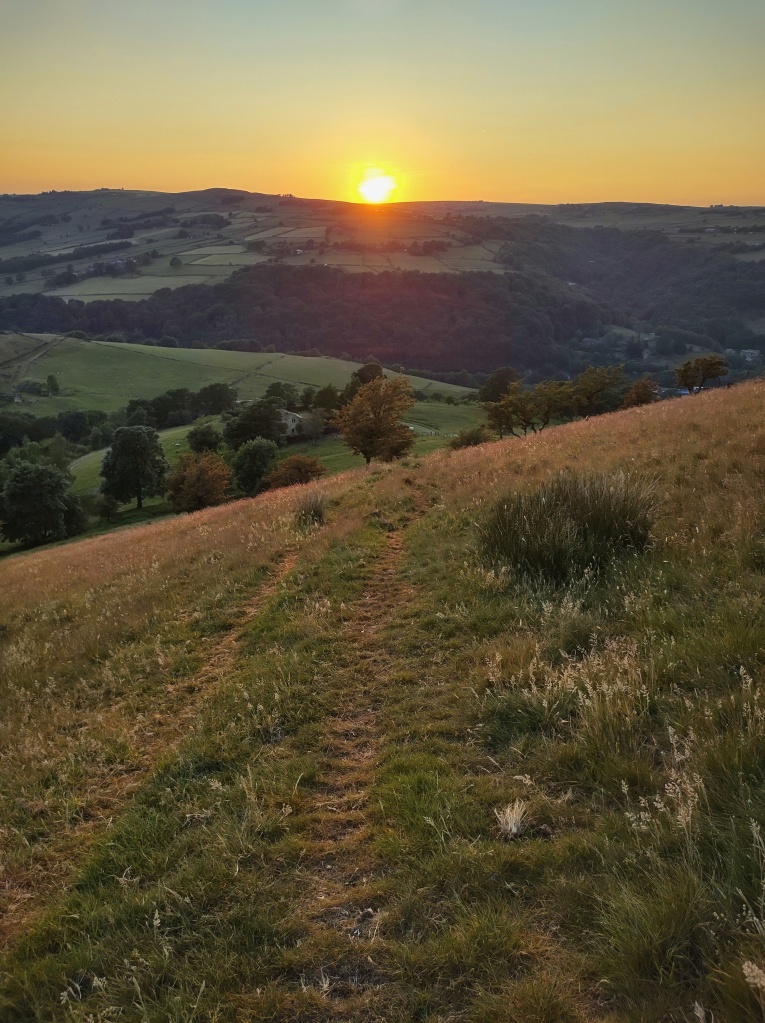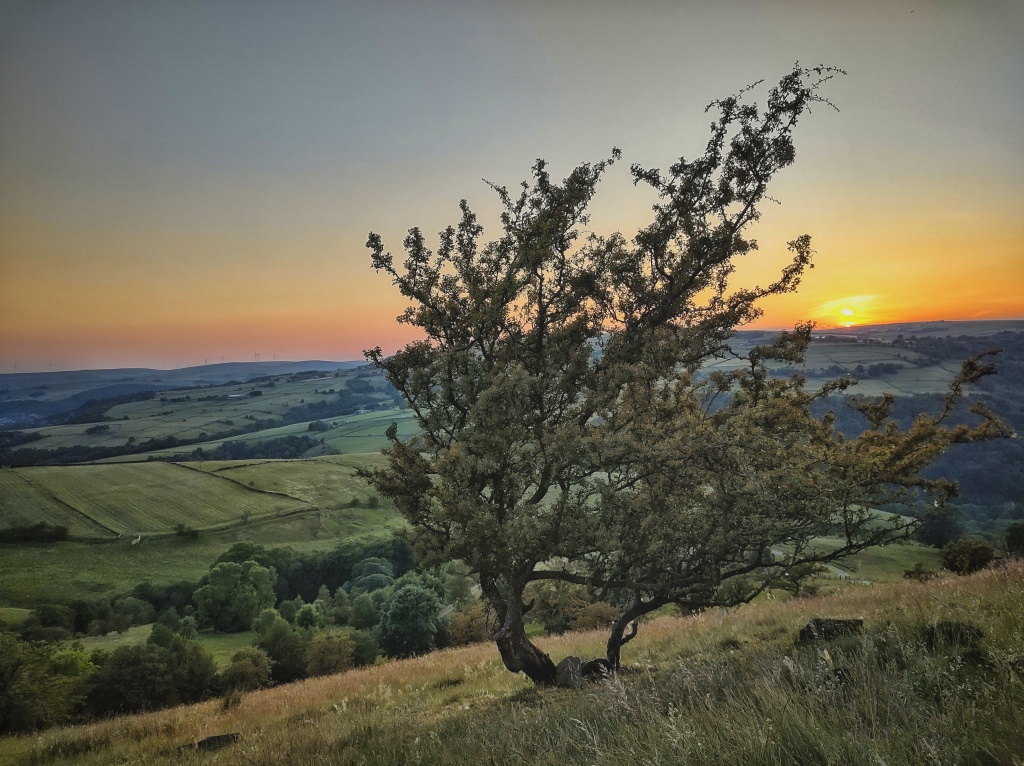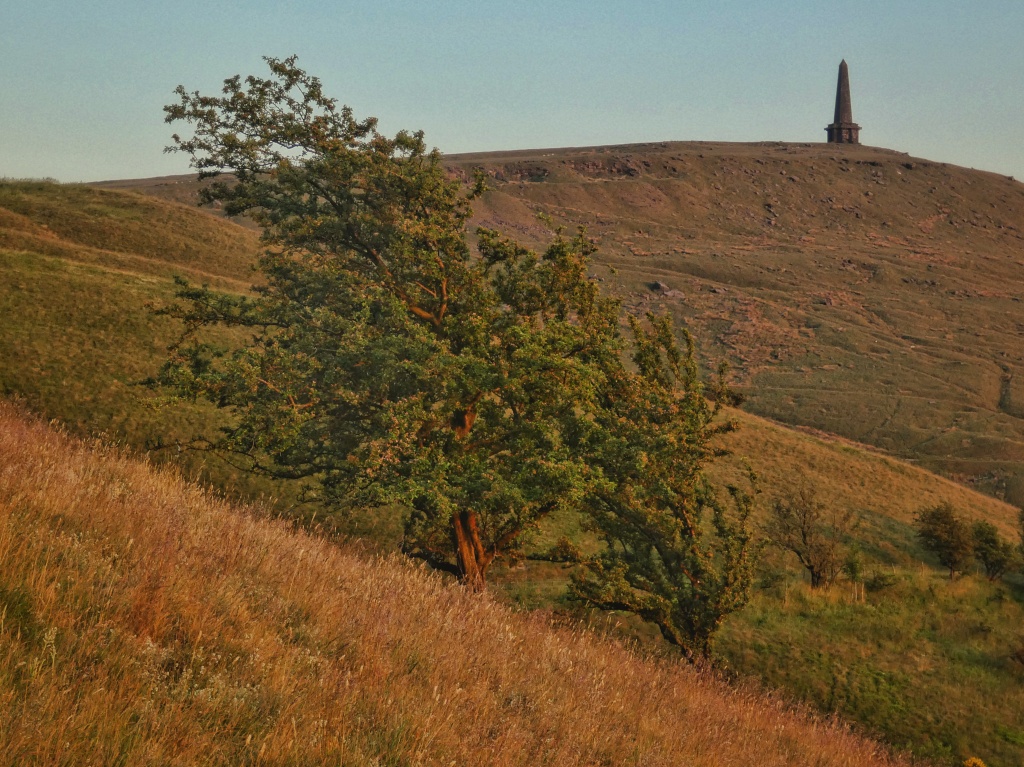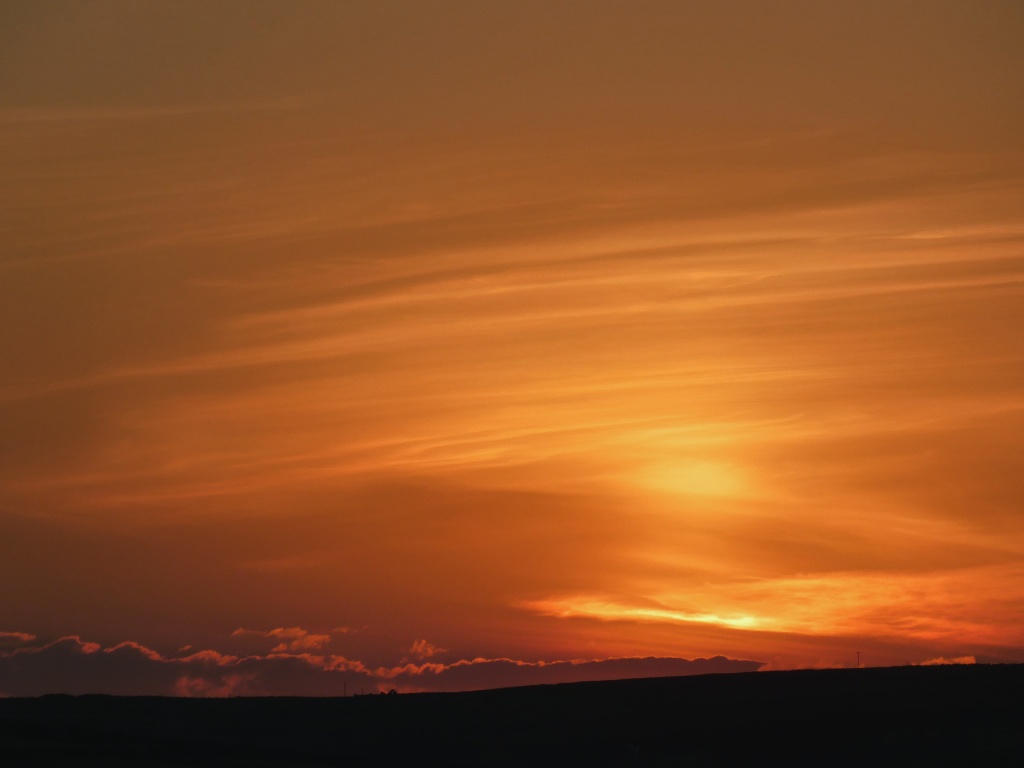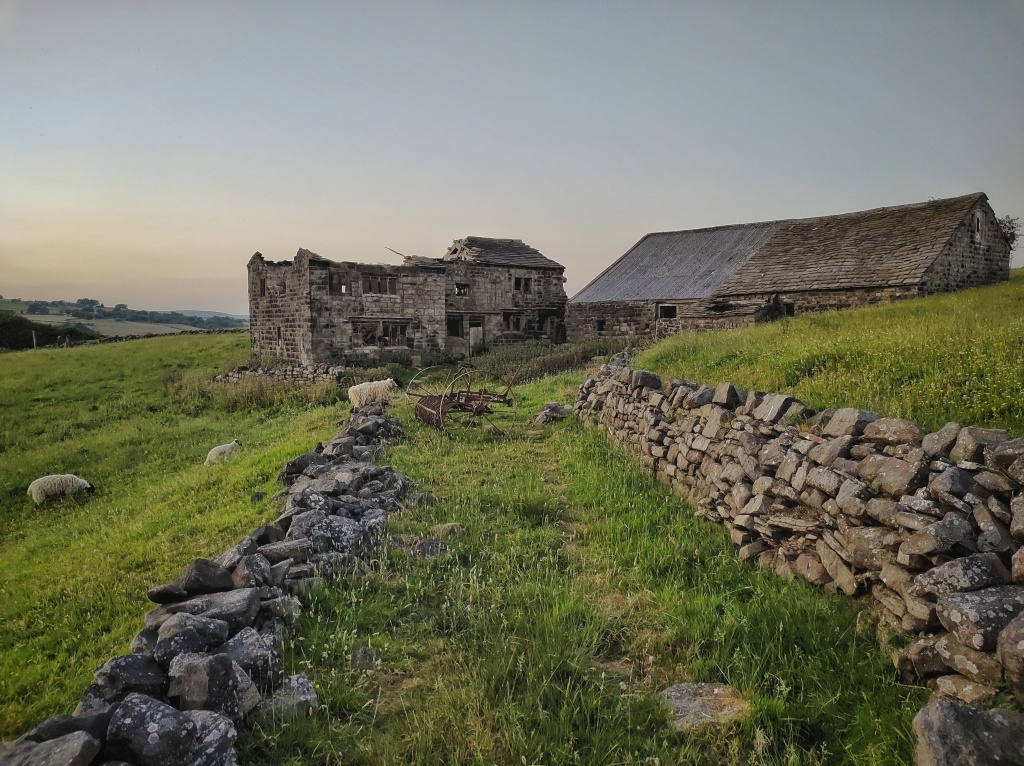Summer, without ceremony, barges spring aside. Temperatures climb to the high twenties, tarmac bubbles, strawberries suddenly ripen, and, punctuated with brief pauses to crowd around notable insects like a large yellow underwing moth and a two-banded longhorn beetle, the children on the village green lark the day long with water pistols, paddling pools and ice lollies. More ominously, the streams and old stone water troughs are running dry, and one afternoon, a thin acrid haze hangs in the air. Smoke from the Canadian wildfires, reported to have reached Norway a few days earlier, has been expected to drift down across Europe, but nearby Pennine moorlands are ablaze too.
The easterly wind, blowing now for the best part of a fortnight, blunts the edge of the heat. It ripples across the hillside canopy of Rawtonstall Wood, its warm gusts rising up the slope, briefly lifting the oak leaves onto their lighter-green undersides before dropping them again as it passes on. The effect of these Mexican waves is like the pulsating surges of changing colours that cross the body of an octopus as it dreams.
Tree bumblebee colonies that established unnoticed in houses in the spring become apparent as the gentle hum of fanning for nest ventilation becomes audible from loft spaces. Goslings are becoming gangly adolescents on the canal. In the school run woods, blackbird, wren and robin fledglings bounce among the bracken, great tit chicks peer from the hole occupied by great spotted woodpeckers last year, long-tailed tit parents desperately try to keep track of their young, and a sparrowhawk nestling wails. Sycamore leaves are glossed with the slick of honeydew in this bumper year for aphids, and the pavements and roads where they overhang are sticky and dark. A pair of speckled wood butterflies duel and dance in a patch of sunlight beside a bank of brambles. Everywhere, this aggregate of 300 microspecies is in flower, some white, some pink, some spent already with incipient fruits forming. They are not the only foreshadowing of late summer and the autumn to come; at the same time as boughs of hawthorn on the lane to Lower Rawtonstall are putting on a final, spectacular snowy show, down in the valley the blossom is wilted and brown and the haws are swelling.
The fingertips of Scots pines, nails painted a gaudy pink with the female flowers that will turn into next year’s cones, reach up towards the northernmost outcrop of Dill Scout, a broken line of escarpment that tops the wood of the same name on the western side of Colden Clough. While gouged with a series of delfs at its southern end, their jutting, sloped-back bluffs are untouched further on, terminating in a promontory that looms over Lumb Bank. A straight line of bilberry among the grasses grows over the broken down wall that separates Dick’s pasture from the crags, and a patch of bird’s-foot trefoil is a scatter of yellow confetti. The whine of the strimmer at work in the writing centrte’s garden is joined by the roar of an old-fashioned baler, moving along the windrows of cut grass in the fields above, giving slow, methodical birth to square bales of hay.
All the long hot Sunday afternoon, a succession of visitors seek shade, cool drinks and cake at the local open gardens event. Among all the commenting on the weather, there is also talk of plants and ponds and vegetable growing, exchanging of experiences of tending a garden in the Pennine climate, usually hostile in a different way to recently. Those descending from the tops – the ‘Gardeners with Altitude’, as the Blackshaw Optimistic Gardeners Society’s tagline goes – are envious of the shelter in the valley bottoms, where plants can grow taller than knee high to a grasshopper without being bent and burnt by the wind’s incessant blast. But the tops and bottoms are united in their resignation to onslaughts from slugs and deer. As well as the traditional blousy blooms of roses and peonies, the new vogue for wildflower meadows is in evidence, with everyone having taken part in ‘No Mow May’, Plantlife’s campaign begun in 2020, and plenty are joining in on its natural extension into ‘Let It Bloom June’. Just as the last visitors are leaving, an almighty thunderstorm skims by over the Lancashire border, and an Airbus A340 bringing celebrating Manchester City fans back from Istanbul careers into the storm and a near miss with a bolt of lightning. And it is not the only close call with effects of the heat; a courier driver negotiating the potholes on Colden Road comes within a foot of having his cab caved in by a birch branch, likely an instance of the heat stress-induced phenomenon of ‘summer limb drop’.
In the cool relief of evening, the interior of Callis Wood is aglow with the setting sun, as it would once have been with the fires of the charcoal burners on their terraced hearths that still remain among the brittle, crunchy holly leaves. Above Oaks Farm, the pastures are studded with tormentil, goldfinch chatter among the hawthorn and holly scrub, a crow sits in one stag-headed ash, a kestrel calls from another, and a fox pads through the rushes, tiny moths rising in its wake. The ruin of Thorps, uninhabited since the 1880s, is marmalade-orange in the last of the sun, its magnificent sycamore a towering cumulonimbus of leaves dark with honeydew. Canada geese wade through the meadows at Cruttonstall, skylarks and meadow pipits sing over the russet grasses of Edge End Moor, a barn owl patrols in Parrock Clough through a storm of rattling mistle thrushes, and the bleat of lamb and answering ewe continues on into the dusk.
